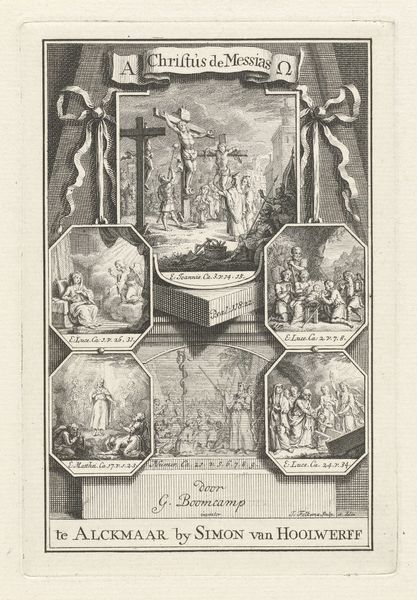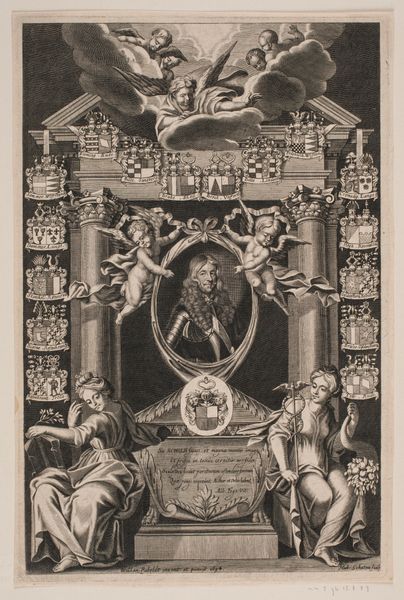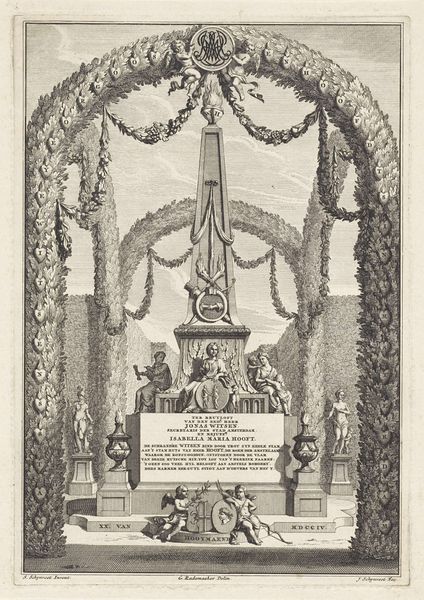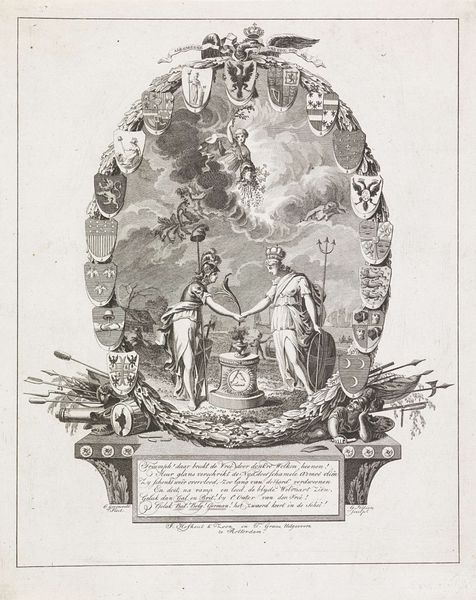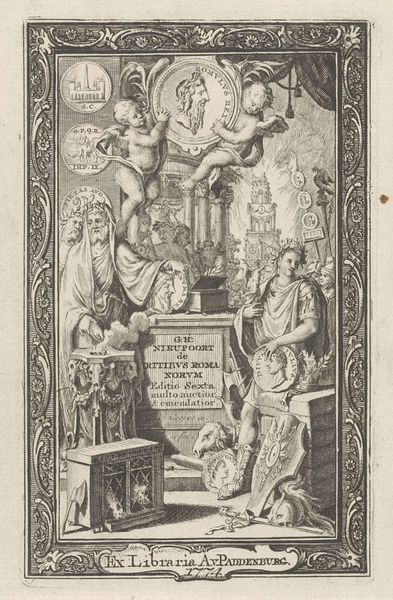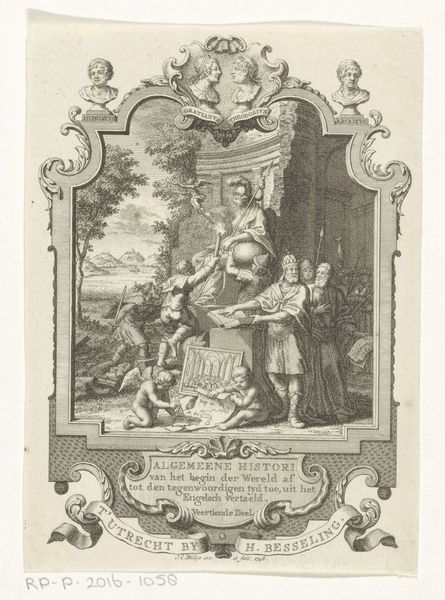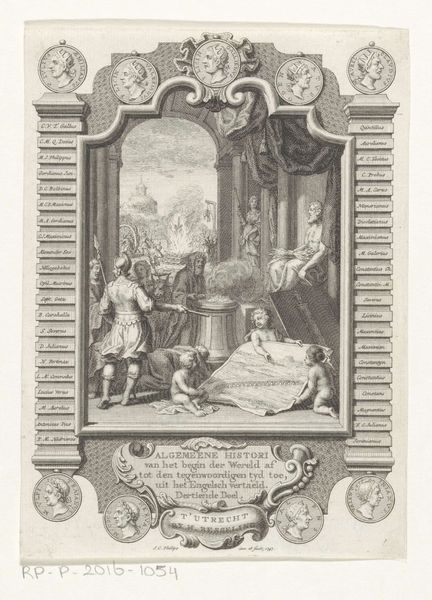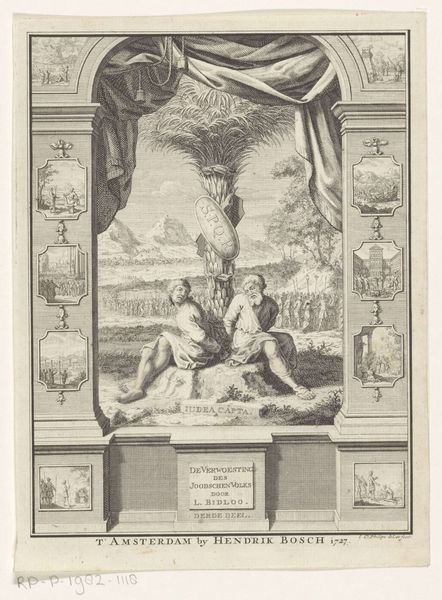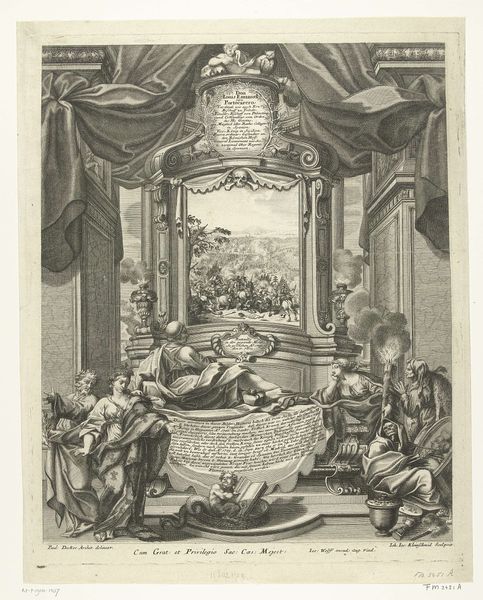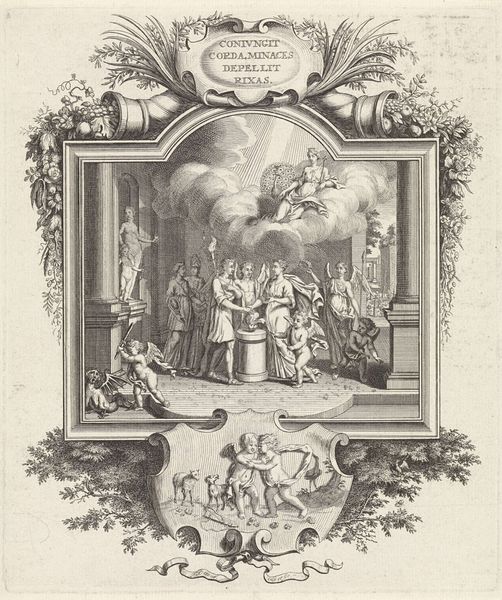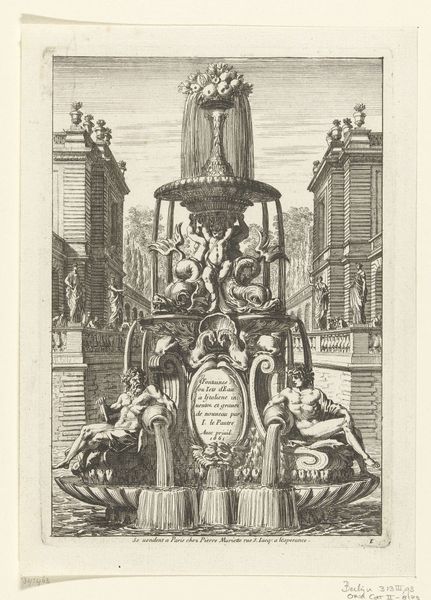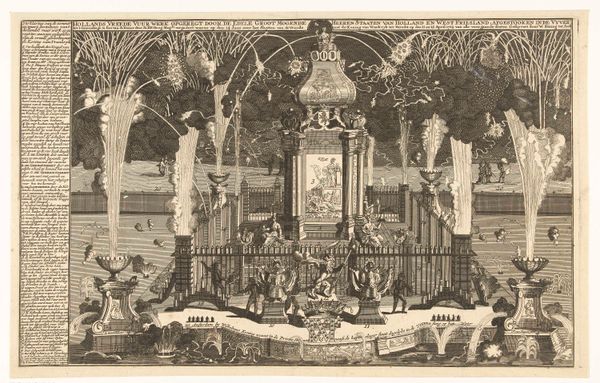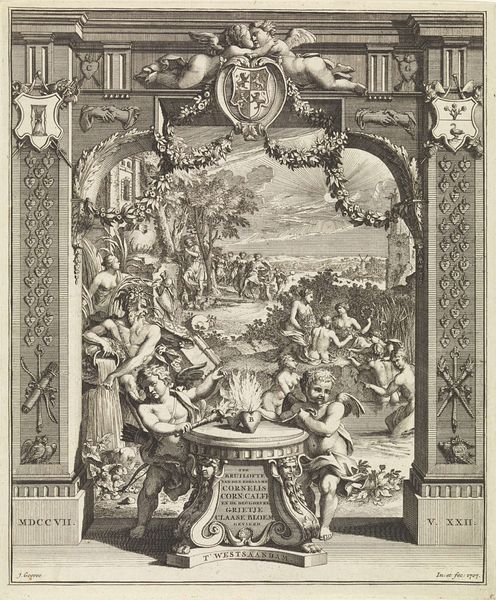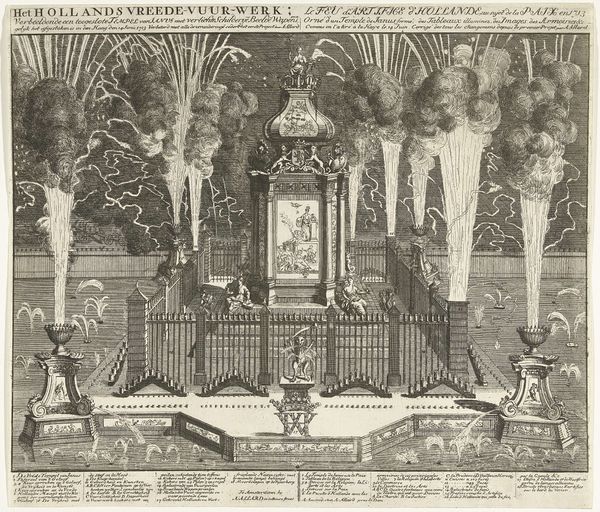
Allegorie op de huwelijksverbintenis tussen Abraham Lestevenon en Geertrui de Vroede 1700
0:00
0:00
print, engraving
#
allegory
#
baroque
#
dutch-golden-age
# print
#
old engraving style
#
history-painting
#
engraving
Dimensions: width 204 mm, height 306 mm
Copyright: Rijks Museum: Open Domain
Curator: Before us, we have Jan Goeree’s engraving from around 1700, “Allegory on the Marriage of Abraham Lestevenon and Geertrui de Vroede,” currently held at the Rijksmuseum. Editor: It has a distinct sense of layered reality; the composition and detail in the etching demand slow observation, revealing the narrative by degrees. Curator: The engraving commemorates a specific union but operates within the established visual language of Dutch allegory, a cultural context steeped in symbolism related to social status. Think about the positioning of the families via the coat of arms and then, of course, the visual encoding of fertility and piety. Editor: Structurally, the monument creates a separation, bisecting the lower terrestrial level with the celestial cloudscape above, which directs the eye towards the family heraldry. The eye reads vertically; bottom to top, earth to heaven, the corporeal ascending into the spiritual realm. Curator: Considering the historical moment, we need to place this piece within Amsterdam’s burgeoning merchant class—people consolidating their positions via marriages such as this. It makes one consider the extent to which economic motivations were celebrated and given artistic life in such a fashion. What we see reflected here are notions of power, the patriarchy, and the very concept of status crystallized into a material form that reinforces very rigid, societal roles. Editor: True. However, what I find striking is Goeree's use of light and shadow to direct our focus—almost like spotlights—revealing the figures engaged in their symbolic roles. These choices emphasize specific narratives and moral judgments embedded within the composition itself. Curator: Indeed. When we consider this piece, we have to grapple with the reality that the artwork simultaneously served a personal and societal purpose, and operated within a historical framework still struggling with basic issues of equality. It's essential to engage with that intersectional analysis in an effort to understand both the overt message and its underlying implications. Editor: Absolutely, it presents a structured vision, where each symbolic choice speaks to societal norms and power structures. Thank you. Curator: A lens through which we might better appreciate and then critically assess this historical encoding of gender, race, class and power.
Comments
No comments
Be the first to comment and join the conversation on the ultimate creative platform.
